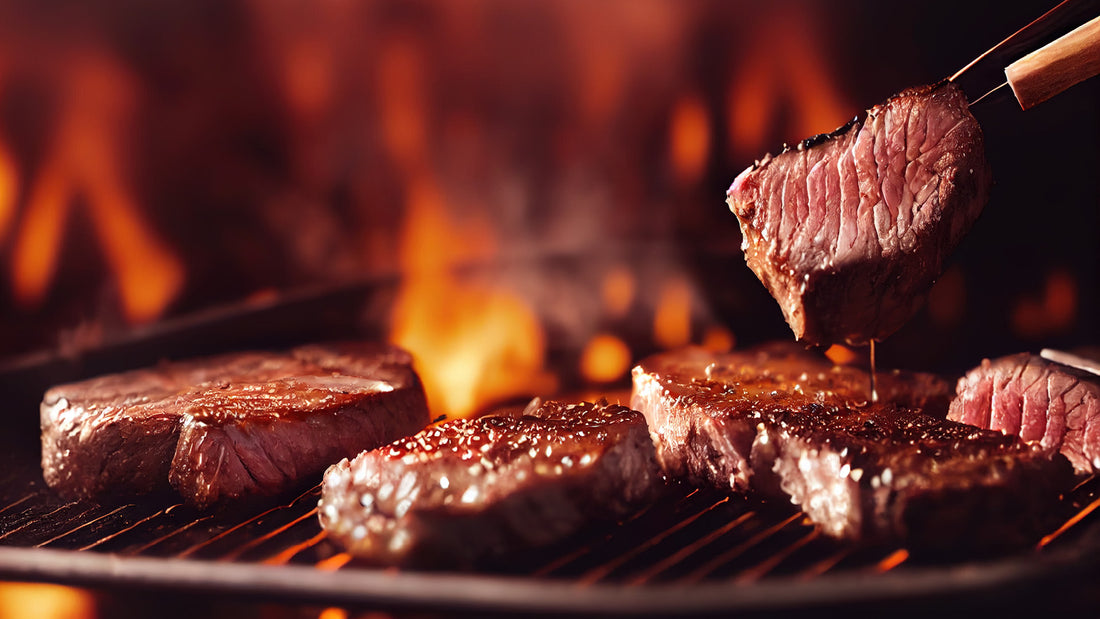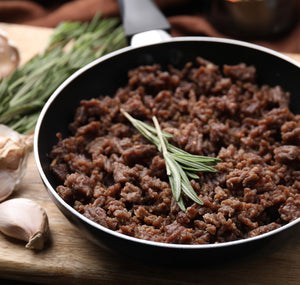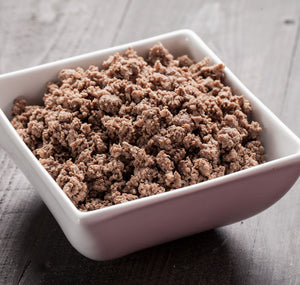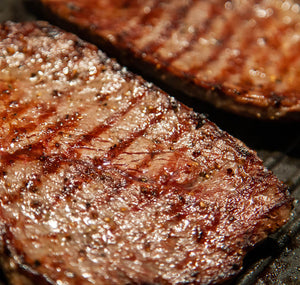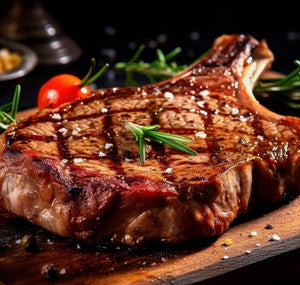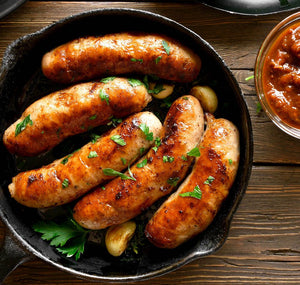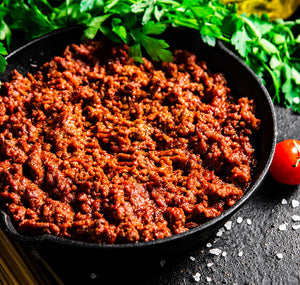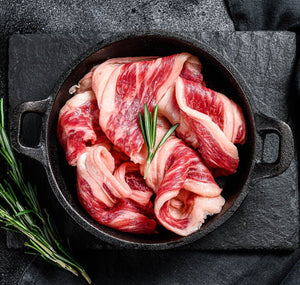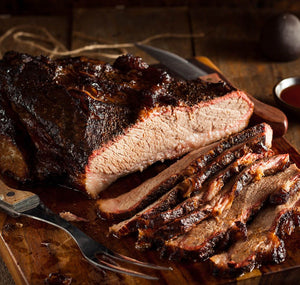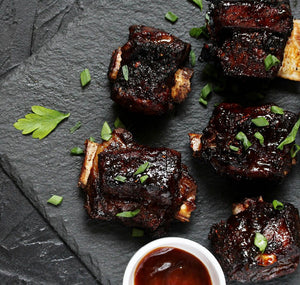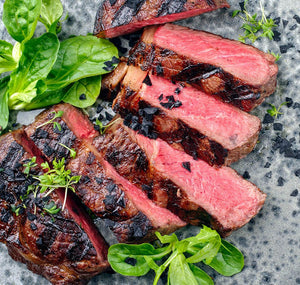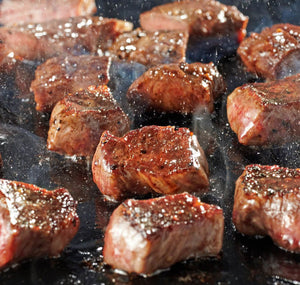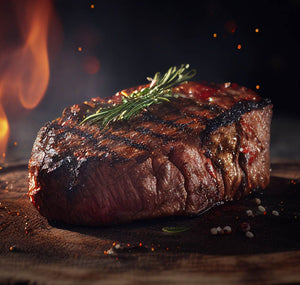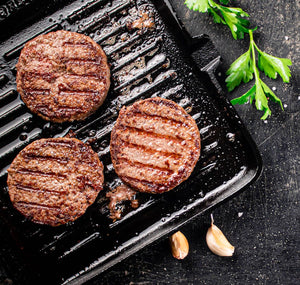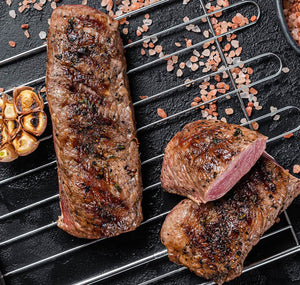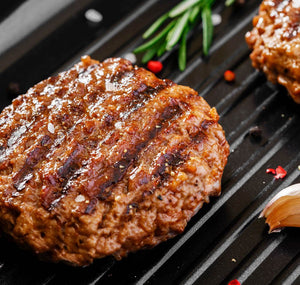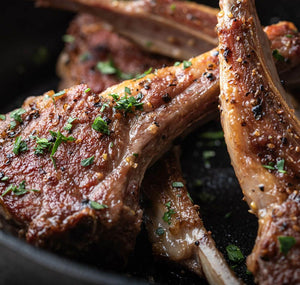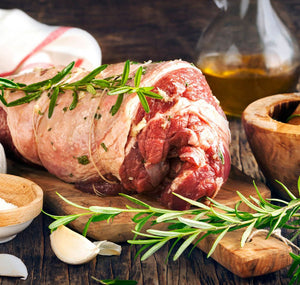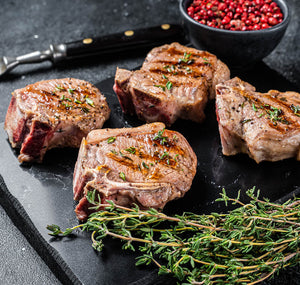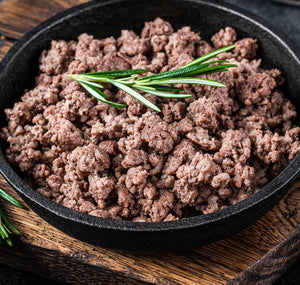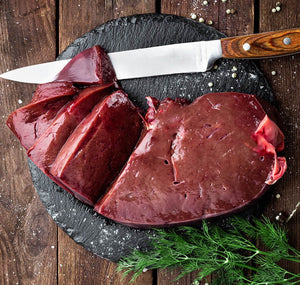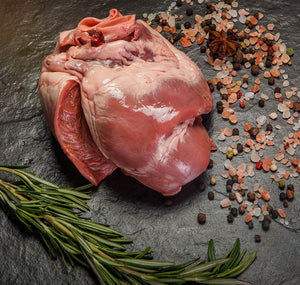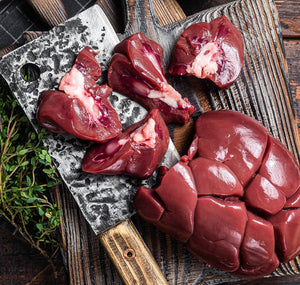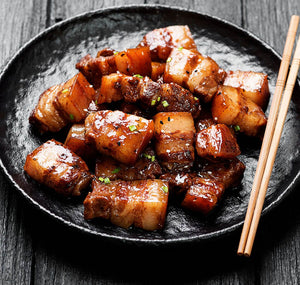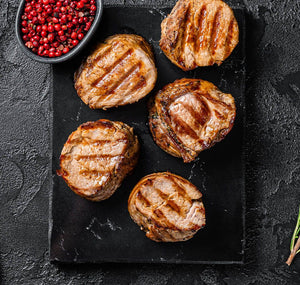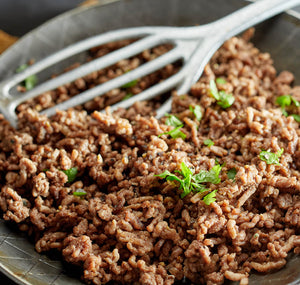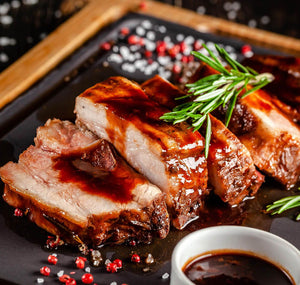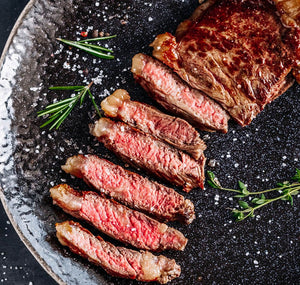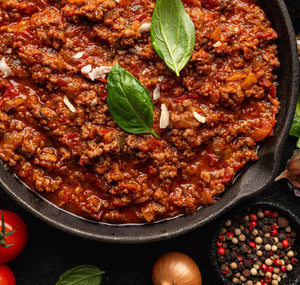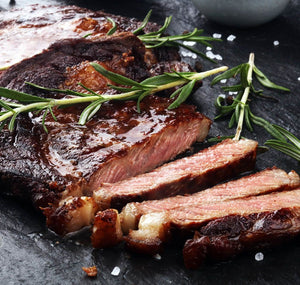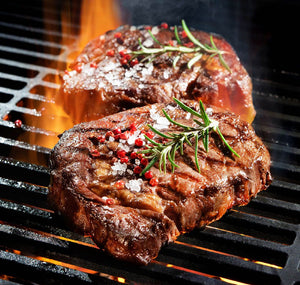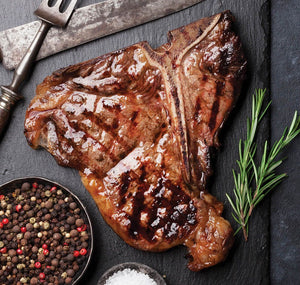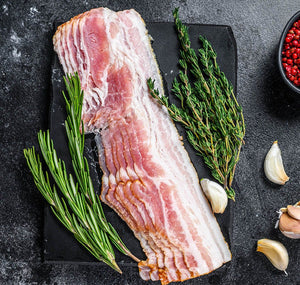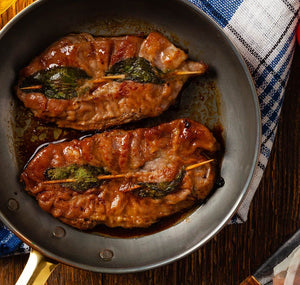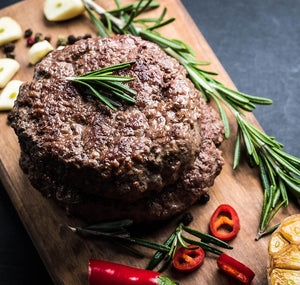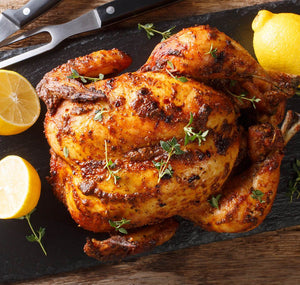The word carnivore originates from the Latin “carō” meaning “flesh” and “vorāre” meaning “to devour”. Anyone who consumes any meat or animal products at all is technically considered to be a Carnivore. An omnivore is someone who eats meat and vegetables.
Debate rages about what was the traditional historic diet consumed by our ancestors. In the modern era, the Carnivore Diet was first studied by the German writer Bernard Moncriff, author of “The Philosophy of the Stomach: Or, An Exclusively Animal Diet” in 1856. He spent a full year consuming nothing other than beef and milk.
In the 1870s, Italian physician Arnaldo Cantani was amongst the first to prescribe his diabetic patients an exclusive animal-based diet and monitor the results.
The Carnivore Diet is now amongst the fastest growing and most popular diets being tried by people today. There is even a full month dedicated to it being World Carnivore month now each year in January.
The Carnivore Diet, which involves eating only animal products, has evolved from what was considered once a fad to now being part of the mainstream with a number of doctors and high-profile members of the nutrition community advocating for it.
For years, many people reported positive anecdotal benefits which are now starting to be studied formally for the first time. We will look to cover some of the key aspects of the Carnivore Diet in this introduction, to help you make an informed choice if this is right for you and the different ways of doing it.
This is an introduction to it and will include helpful tips for people trying it for the first time. Later we will introduce more in-depth articles for those who have already been familiar with the Carnivore Diet for quite some time.

What is the Carnivore Diet?
The Carnivore Diet is an elimination diet in which you only consume animal-based products. This includes red meat, poultry, fish, eggs and sometimes dairy and honey.
It is a form of doing the Ketogenic Diet and cuts out all processed foods and vegetables. It is also called the Zero Carb diet for this reason.
How does the Carnivore Diet Work?
The Carnivore Diet primarily works by acting as very high-level elimination and allergen diet that also flushes out oxalates.
What is an Elimination / Allergen Diet?
An elimination or allergen diet is a dietary plan that involves cutting out a food or group of foods believed to cause an adverse food reaction or food intolerance. The removal of specific foods for a period of time and then reintroducing them enables someone to learn which foods are causing symptoms or making them worse.
Our bodies can react to foods that may not be so immediate and may or may not be tied to an immune system response. Food intolerances may be triggered by various natural compounds found in foods or common food additives.
The Carnivore Diet is considered the ultimate form of an elimination diet as it immediately cuts out all of the potential foods that may be causing issues with someone.
What are Oxalates?
Oxalates are natural compounds found in vegetables, fruits, nuts and grains. They are also naturally created in the human body as a waste product.
Oxalates can cause digestive problems and gastric distress and should be avoided by anyone with impaired gut function.
The Carnivore Diet works to eliminate oxalates from your diet. This elimination or an increase in the consumption of calcium that binds to oxalates in the stomach and intestines before it moves to the kidneys, helps to flush out oxalates from the body before they become stones.
What are the potential benefits of the Carnivore Diet?
- Weight Loss
- Blood Sugar regulation for someone who is diabetic or pre-diabetic
- Improved Mood
- Improved digestion
- Reduction in symptoms of osteo-arthritis
- Removal of Brain Fog
- Increased Muscle Tone
- Disappearance of allergies
What are the potential disadvantages of the Carnivore Diet?
- The diet is high in saturated fats and can potentially elevate LDL Cholesterol.
- Many people often incorporate too many unhealthy processed meats that contain nitrates, nitrites and sulphites.
- Newcomers to the Carnivore diet can encounter gastric distress during the initial phase.
- The diet is high in sodium and low in fibre.
What versions of the Carnivore Diet are there?
Traditional Carnivore
If you are following a traditional Carnivore diet you can eat these animal-based foods.
- Meats – Beef, lamb, pork, bacon, chicken, turkey, fish and organ meats.
- Eggs, butter, bone marrow and bone broth.
- Seasonings with no carbs including salt and black pepper.
- Sauces and gravies made from meat drippings mixed with ghee, butter or beef fat.
Lacto-Carnivore
This version is similar to the traditional version but also includes all forms of dairy including milk, cheese, butter and cream. Many people doing Lacto-Carnivore will still drink coffee.
Many newcomers to the Carnivore diet will experiment with a month of traditional and a month of Lacto-Carnivore to see how their body responds to each.
Keto-Carnivore
A keto carnivore diet follows the traditional principles of the Carnivore Diet but also allows for the consumption of keto-approved plant foods such as certain nuts, seeds and non-starchy vegetables.
Low carb vegetables include broccoli, spinach, zucchini and capsicum. It allows for nuts such as pecans, Brazil nuts and coconut oils. It includes all seasonings such as salt, black pepper, garlic etc. You can also drink coffee, tea and water on this diet.
The Lion Diet
The Lion Diet, which is rapidly increasing in popularity, involves only eating meat from ruminant animals, plus salt and water. Ruminant animals include cows, sheep, goats and deer. This rules out pork, fish, chicken and dairy.
Versions of the Lion Diet can include coffee, tea and spices.
The Lion Diet is a little more complex as in a later stage of the diet is the reintroduction phase, which involves slowly re-adding certain foods after the gut has been healed.
Carnivore plus fruits and honey
This version of the Carnivore diet includes all of the traditional components plus adding various fruits and raw honey.
The most popular fruits to add on this version of the diet are berries, citrus fruits, cherries, coconuts, olives and avocados.
This version tends to work better for people who are involved in doing a high amount of exercise and physical activity. Those who have a more sedentary lifestyle are more prone to an increase of body fat when doing this version.
Do you need to commit 100% to the Carnivore Diet to do it properly?
Yes, it is recommended when doing the Carnivore Diet for the first time to make a 30-day commitment to doing it 100%. This is for a few reasons.
- Your body will take an initial period to adjust and see the results. This is extremely important to monitor how your body responds to not consuming food that will trigger allergies and sensitivities.
- The initial period involves a detox and clearance of Oxalates from your system.
- The combination of a mostly Carnivore diet plus processed carbohydrates can in fact lead to greater weight gain.
- Finally, most people find that after committing to the Carnivore Diet for 30 days, their cravings subside and it becomes significantly easier after this initial phase.
What type of meat and which cuts of meat are best suited for the Carnivore Diet?
When you are consuming all meat sources only in your diet, the source of them becomes more important. Pasture-raised and grass-fed meat is considered to be higher in Omega 3 fatty acids and is sought after by most Carnivores.
Higher fat content meats are more popular on the Carnivore diet as they are more satiating. These include cuts such as the Rib Eye, Scotch Fillet and a Porterhouse Sirloin Steak.
Organ meats are considered to be the multivitamin of the Carnivore Diet. In particular beef liver, kidneys and hearts contain a blend of high-density nutrients that are a go-to for Carnivores.
Should I take electrolytes if I am starting the Carnivore Diet?
Some newcomers to the carnivore diet who are consuming minimal carbs for the first time, find that their body retains less water and therefore fewer electrolytes. This can be further exacerbated if someone is detoxing a significant amount of oxalates. Some initial, potential side effects can include headaches or migraines, muscle cramps, and fatigue. For this reason, you may want to take a daily electrolyte supplement while your body adjusts.
Many people who start the Carnivore diet never encounter this problem, however it might be worthwhile having some electrolytes on hand just in case.
Summary
In summary, it is worth experimenting with different forms of the Carnivore Diet and finding out what is right for you. Many people new to the Carnivore Diet will see their medical professional before they commence and have blood work done. They are then able to follow up on a routine basis to monitor their blood test results and see how their body is responding.
We will cover a lot more information and tips about the Carnivore Diet in later articles.
Disclaimer
The information in this blog article does not provide professional advice on a particular matter.
This blog article is not a substitute for independent professional advice. Nothing contained in this site is intended to be used as medical advice and it is not intended to be used to diagnose, treat, cure or prevent any disease, nor should it be used for therapeutic purposes or as a substitute for your own health professional's advice.
We do not accept any liability for any injury, loss or damage incurred by use of or reliance on the information provided in this article or on this website.
About the Author
Steven Hines is one of the owners and co-founders of Stockman Steaks. His family has been in the meat business for over 5 decades and 3 generations. He has a passion for eating great quality meat and researching the health benefits behind it.


